“The Suzuki GSX-R750 could be the last of the Mohicans, the last of the sportbikes of yesterday, where electronic gizmos were left to Gameboys and real riding skill mattered, not how many buttons on the ’bars you had to make you think you were fast.”

Photography by Ryan Nitzen, Ed Subias
I’m not talking about the 2025 Suzuki GSX-R750 here. Those were my words from my test after attending the Australian national launch of the 2011 Suzuki GSX-R750 at Hidden Valley Raceway in the Northern Territory, otherwise known as the gateway to the Outback.
I may as well just publish that test here instead of talking about the 2025 edition, because the bike hasn’t changed one bit aside from a colorway rethink in 2014. Jeez, even typing that feels strange.
Going through my cranial back catalog of the thousands of bikes I’ve ridden since that day in April 2011, I can’t think of one, save for perhaps the Honda XR650L, that has remained completely untouched by the march of time. The ’25 GSX-R is exactly—exactly—as it was back then, but a lot has happened in the proceeding 14 years and in a wonderful twist of irony, the bike that started it all for Suzuki in 1985 is now right back in vogue.
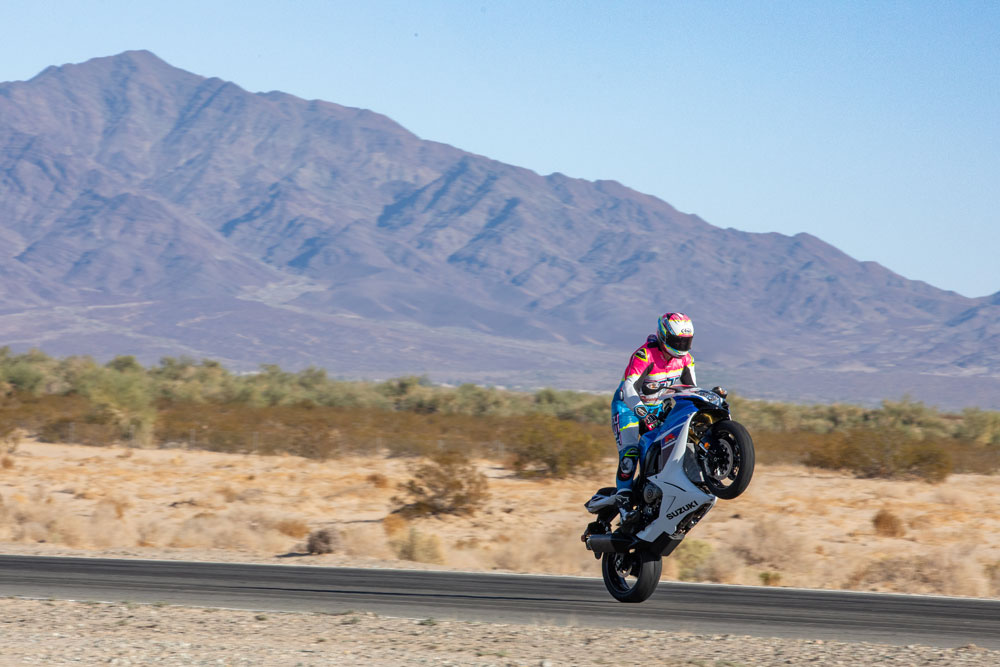
The evolution of the Supersport category into pretty much anything under 1000cc—be it 800cc triples, 959cc twins, 636cc fours, whatever—means Suzuki’s golden goose has been sitting on the golden egg all this time.
The M4 Ecstar Suzuki team, run by my good mate, Chris Ulrich, now has possibly the best bike on the grid. MotoAmerica rules mean the Suzuki needs to run a ride-by-wire throttle for the series control ECU that the standard bike doesn’t have, so Chris jumped the gun on everyone, and he is the owner of the patent for such a system. For Chris, it’s more a matter of making the bike slower than faster, because if the 750 was really let off the technical leash, no one would see which way it went.
It’s funny how things come full circle, right?
It’s been exactly 14 years since I last rode a 750. I’ve ridden the GSX-R600 so many times I lost count after Chris built me a race bike I pedaled for three seasons in the CVMA Championship. It was the most beautiful bike to race, with a chassis kissed on the nose by angels. The 750 is the same bike (same chassis, brakes, suspension), just with a bigger motor.
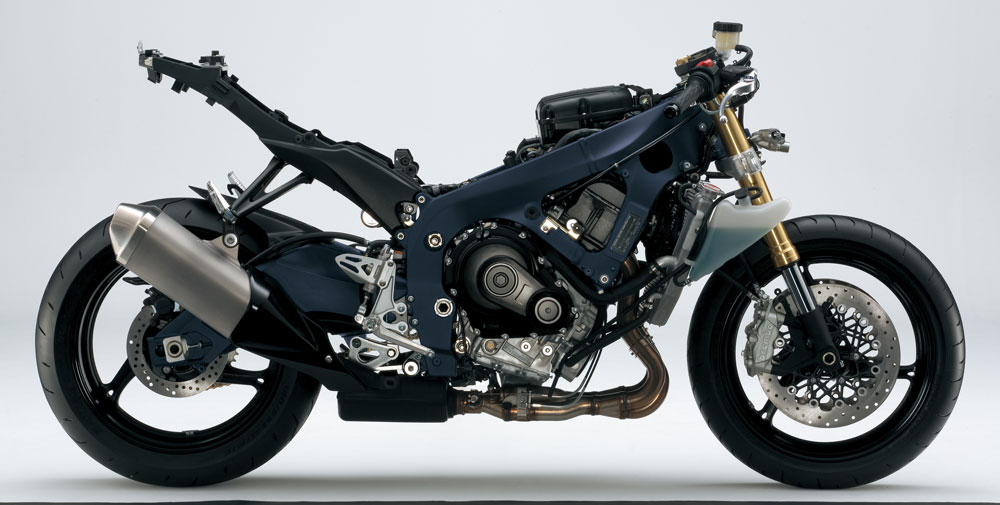
Back when Suzuki threw out claimed horsepower numbers, they said the stock bike put out a staggering 148 horsepower, which might be the case at the crank but even then, I would question it. You can expect to see anywhere from 120-125 horsepower at the wheel from your stock 750, depending on the dyno operator, but it’s only a few tweaks away from making a very reliable 135-140 horsepower at the wheel. I laugh so hard when the trolls on the internet swear blind their GSX-R750 has “150 horsepower, brah.” No, brah. It doesn’t. Go sit in the corner.
In the age of 190-plus rear wheel horsepower superbikes, please, let me assure you, 120-125 RWHP is more than enough to get your jollies, especially with no rider electronics to back you up like this 750. That amount of power is all most riders will ever need—it’s certainly all I need at this stage of my riding life.
Riding the 750 on track is such a rewarding experience. There’s a bit of a power kick at 6500 rpm, but for the most part the power delivery is buttery smooth, and it’s matched to the single best induction roar of any bike I’ve tested in the last 14 years. Facts.
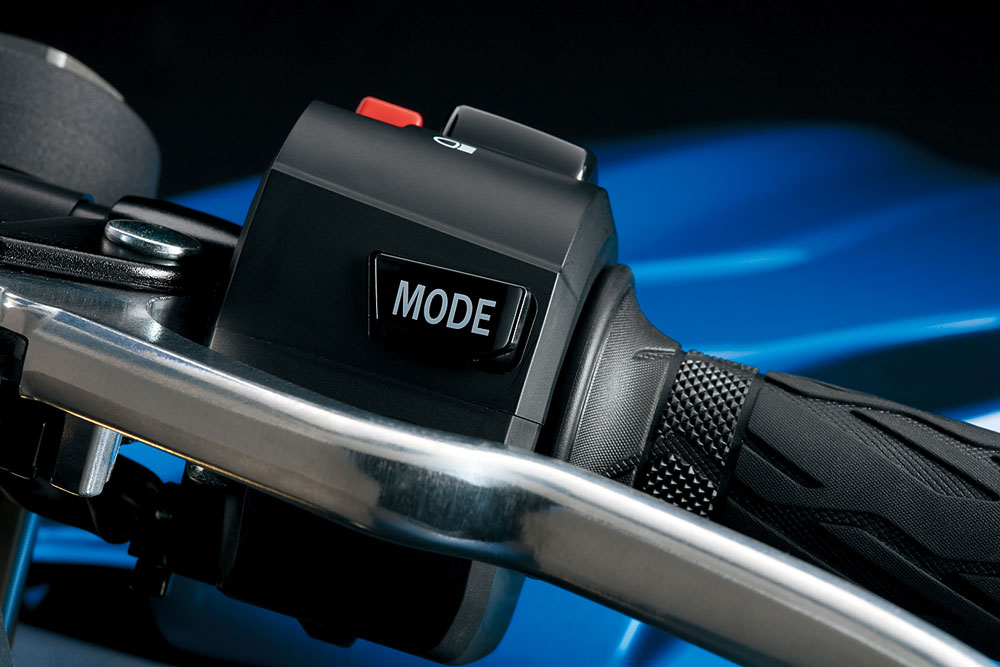
The lack of electronics ensures you must be fully present while riding. You need to be careful when on the side of the tire because although it has sub-130 horsepower, it can still highside you rather quickly if you get too greedy with your right hand.
But, for the most part, you and the Suzuki’s 750cc inline four-cylinder motor will be firm friends. There’s no quickshifter for the six-speed gearbox, but that hardly matters. Matching the revs perfectly on downshifts is supremely satisfying but requires you to be, you guessed it, present in the moment—listening, feeling, understanding what the engine wants and how it wants you to do it. You can almost hear the 750 singing the famous lyrics by long-gone R&B band TLC, “I don’t want no scrub. A scrub is a guy that can’t get no love from me.” So, don’t be a scrub.
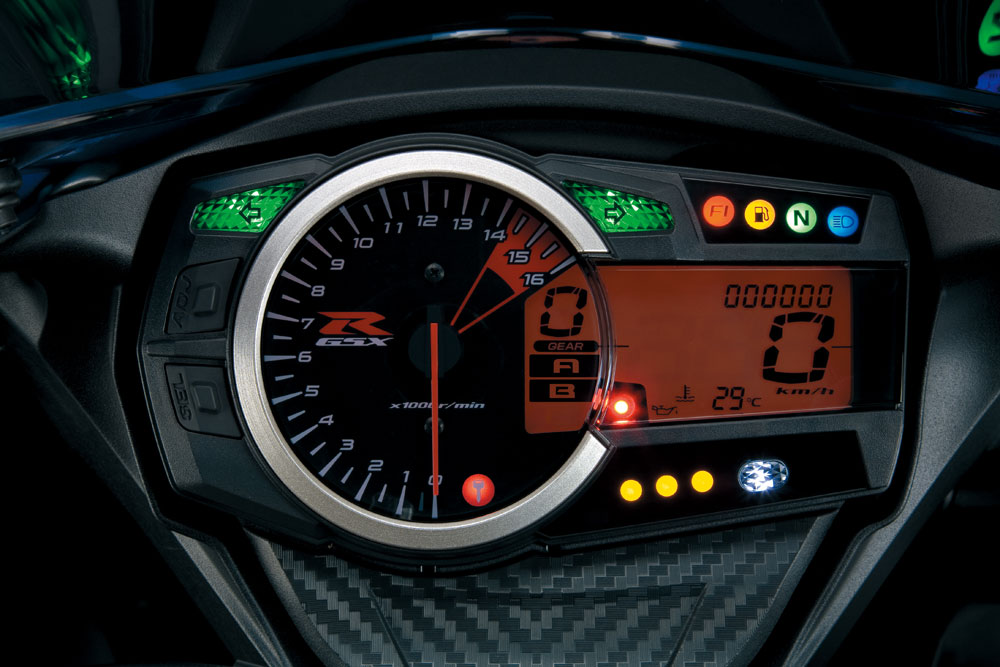
When the 750 was last touched up in 2011, Suzuki claimed to have shed an astonishing 19.8 pounds from the previous model. These Jenny Craig-level savings came from a new twin-spar chassis, lighter engine components, a new exhaust system, lighter Brembo M4.32 calipers, new Showa Big Piston Forks, lighter wheels and lighter bodywork, right down to the fasteners that hold it to the bike.
Now, if we look at the spec of the new Yamaha YZF-R9, the GSX-R comes in a claimed 11 pounds lighter with a full 4.5-gallon tank of America’s finest. This is a bike from 14 years ago, making it a fair bit lighter than the pretty new girl in school in the R9. That’s neither here nor there, but an interesting point, nonetheless.
Those 419 pounds draped in blue and white bodywork are positioned almost perfectly. A slightly forward, but not too much, weight bias allows you to load up the front wheel with plenty of gusto, making the 750 turn on a dime. One thing you will want to do is ditch the standard tires, as the 750 is (as far as I know) the only bike to still come standard with Bridgestone’s Battlax BT016 rubber that went out of production many, many years ago. The reason is the Suzuki was homologated with these tires back in 2011, and as nothing’s been changed since and no new homologation has been issued, that’s what the bike comes with.
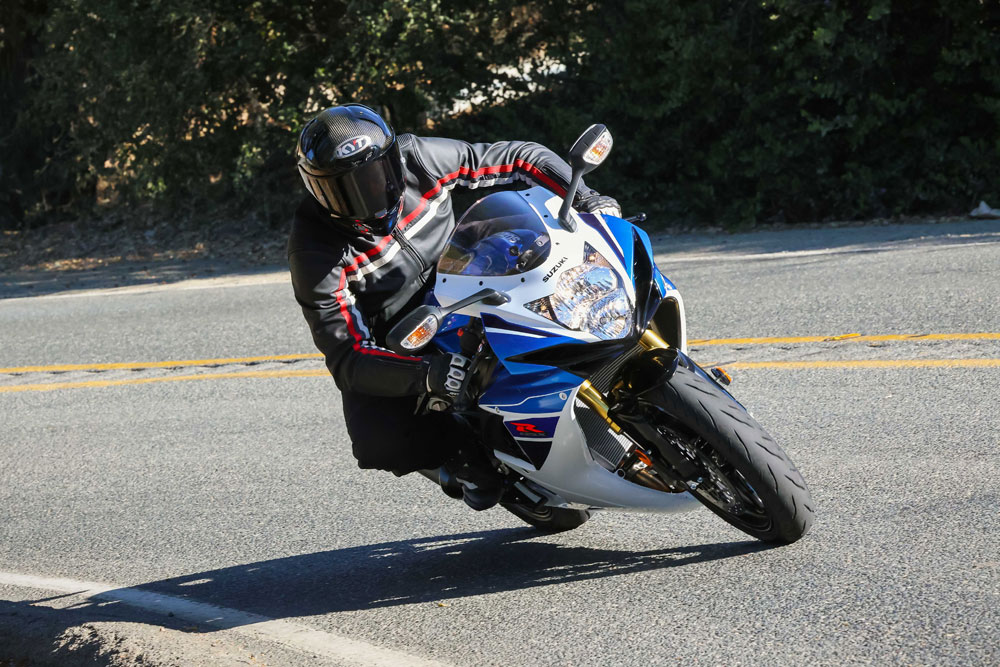
I immediately threw those in the trash and put on a set of Bridgestone Battlax S23s, the tire of which we did the launch in South Africa in 2023. It is an absolute gem of a tire that has since become standard fitment on the Kawasaki Ninja 1100SX, the Yamaha MT-09 and SP, and, yes, the new YZF-R9 (check out the test HERE).
Don’t expect much in the way of comfort while on the 750. This is a pure sportbike, so comfort has taken a firm back seat to an attack ride position, but it’s still reasonable enough to expect hour-long rides before you need to get off and stretch. But remember, this ain’t no touring bike.
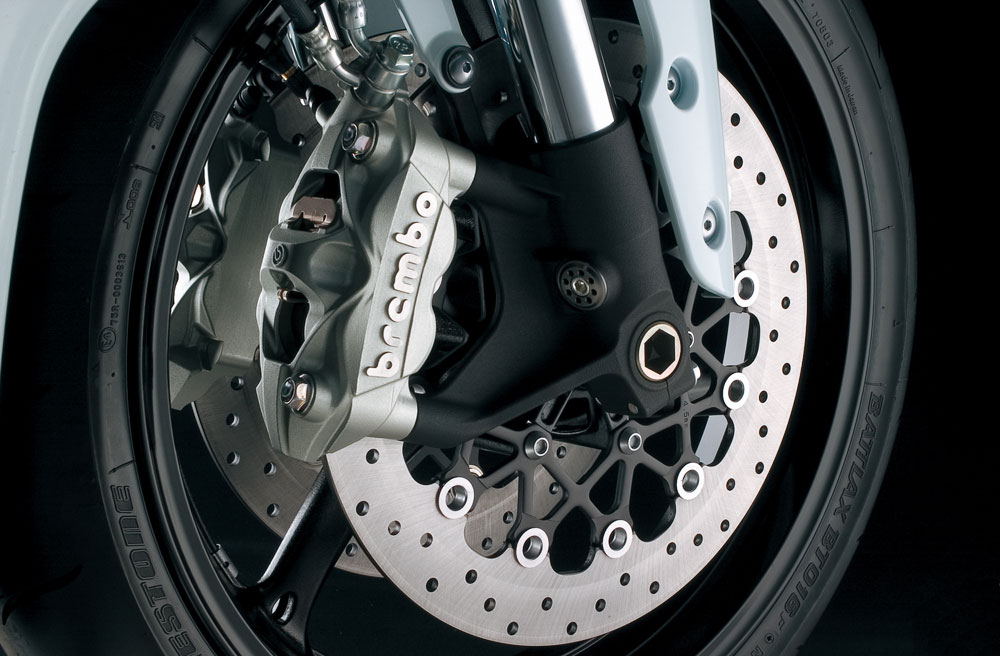
A weak point with the 750 is in the braking department. The Brembo M4.32 calipers are ancient (a bit like the bike, really), and combined with the equally old master cylinder, if I were to own a 750, that’d be the very first upgrade I would make. There’s enough braking power there but it has a bit of a wooden feel, and brakes have come a long, long way since 2011. Plus, upgrading doesn’t cost much and will make a gigantic difference to the ride quality.
That is honestly my only gripe with the 750. Oh, that, and the price. Suzuki is retailing the 750 for $13,149, and this is for a 14-year-old design. Regardless of whether it is a fantastic machine or not, in my humble opinion, that is too much. Yamaha’s bringing the brand-new R9 to dealers this year at $12,499 and that has every electronic rider aid under the sun. Kawasaki is even less, with their not-quite-as-old-as-the-Suzuki ZX-6R 636cc supersport bike (it had a camshaft update in 2023 but that’s it) selling for $11,300. Suzuki will need to address that blue and white elephant in the room because regardless of how good the 750 is and has always been, sportbike riders are notoriously tight and have next to zero brand loyalty, especially when there’s something shiny, fast and cheaper around the corner.
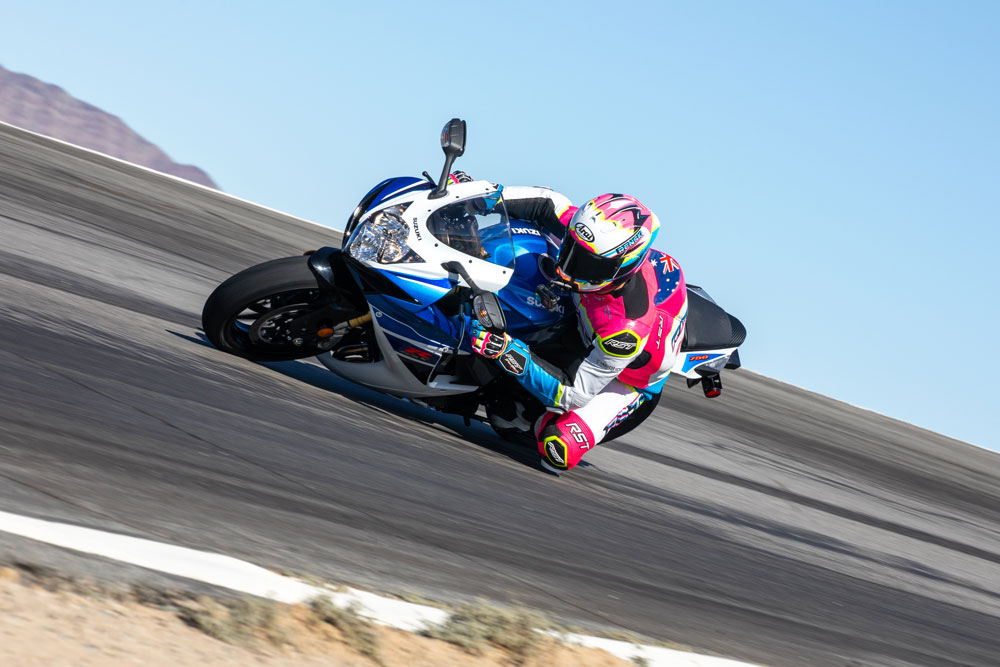
Regardless, the 2025 Suzuki GSX-R750 is an absolutely superb motorcycle. I have been thinking for a while now that perhaps the beginnings of the last decade were the zenith for pure sport biking, before computers and sensors and stratospheric power numbers sent sport biking into an entirely different direction.
We are one of the few countries in the world where you can still buy a GSX-R750. Over the years, the 750 has been dropped from major markets around the world like Europe and most of Australasia, so we as sporty bike riders in the USA should rejoice.
The GSX-R750 reminds me of why I love sportbikes—it’s fast, svelte, sexy as heck with thankfully no winglets, it has enough power to keep me interested, a divine sporting chassis that I never tire of, and no electronics to dull the experience.
The Suzuki GSX-R750 is the sportbike rider’s sportbike.CN
VIDEO | The 2025 Suzuki GSX-R750 is Still Unchanged
(And We Love It)
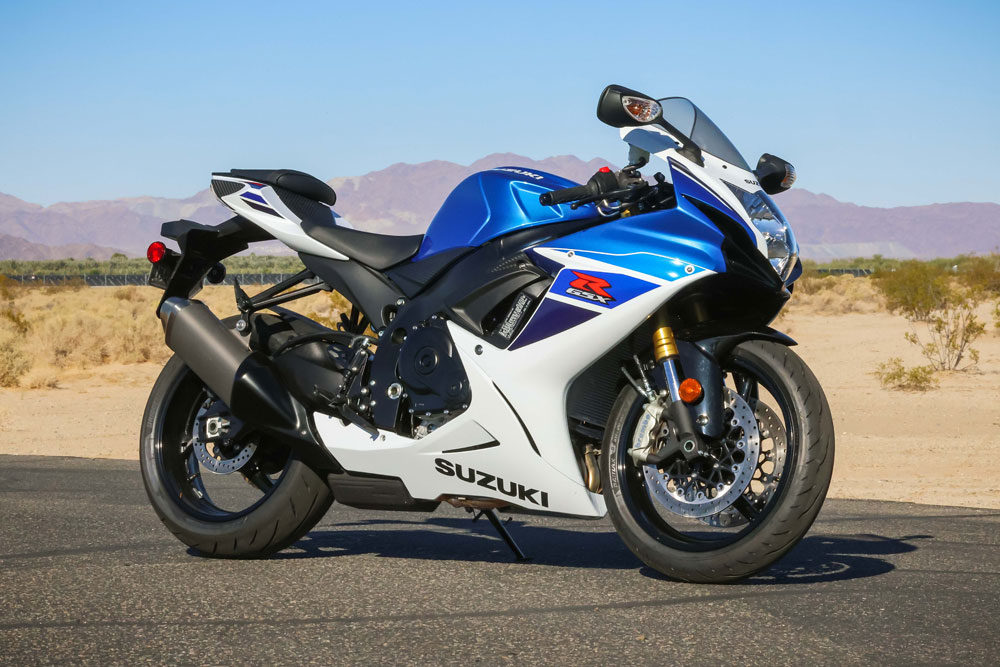
2025 Suzuki GSX-R750 Specifications
| MSRP | $13,149 |
| Engine | Inline 4-cylinder, four-stroke |
| Valvetrain | 16-valve, DOHC |
| Displacement | 750cc |
| Bore x Stroke | 70 x 48.7mm |
| Cooling System | Liquid |
| Fuel Injection | Electronic fuel injection system, 46mm throttle bodies, Suzuki Dual Throttle Valve System |
| Exhaust | 4-2-1 |
| Transmission | 6-speed |
| Clutch | Wet, multi-plate, slip and assist |
| Electronics | Three Riding Modes, no TC or ABS |
| Chassis | Cast aluminum twin-spar |
| Front Suspension | 41mm Showa Big Piston Fork, fully-adjustable |
| Rear Suspension | Monoshock, fully-adjustable |
| Front Brake | Single 310mm disc, Brembo 4-piston radial monobloc calipers |
| Rear Brake | Single 220mm disc, Brembo single-piston caliper |
| Front Tire | 120/70ZR17M/C (58W) |
| Rear Tire | 180/55ZR17M/C (73W) |
| Rake | 23.5° |
| Trail | 3.8 in. |
| Wheelbase | 54.7 in. |
| Seat Height | 31.9 in. |
| Fuel Capacity | 4.5 gal (4.2 gal. California model). |
| Weight (claimed, curb) | 419 lbs. |

Click here to read the 2025 Suzuki GSX-R750 Review in the Cycle News Digital Edition Magazine.
Click here for the latest Cycle News Sportbike motorcycle reviews and news.
Click here for more Suzuki motorcycle reviews and news.

